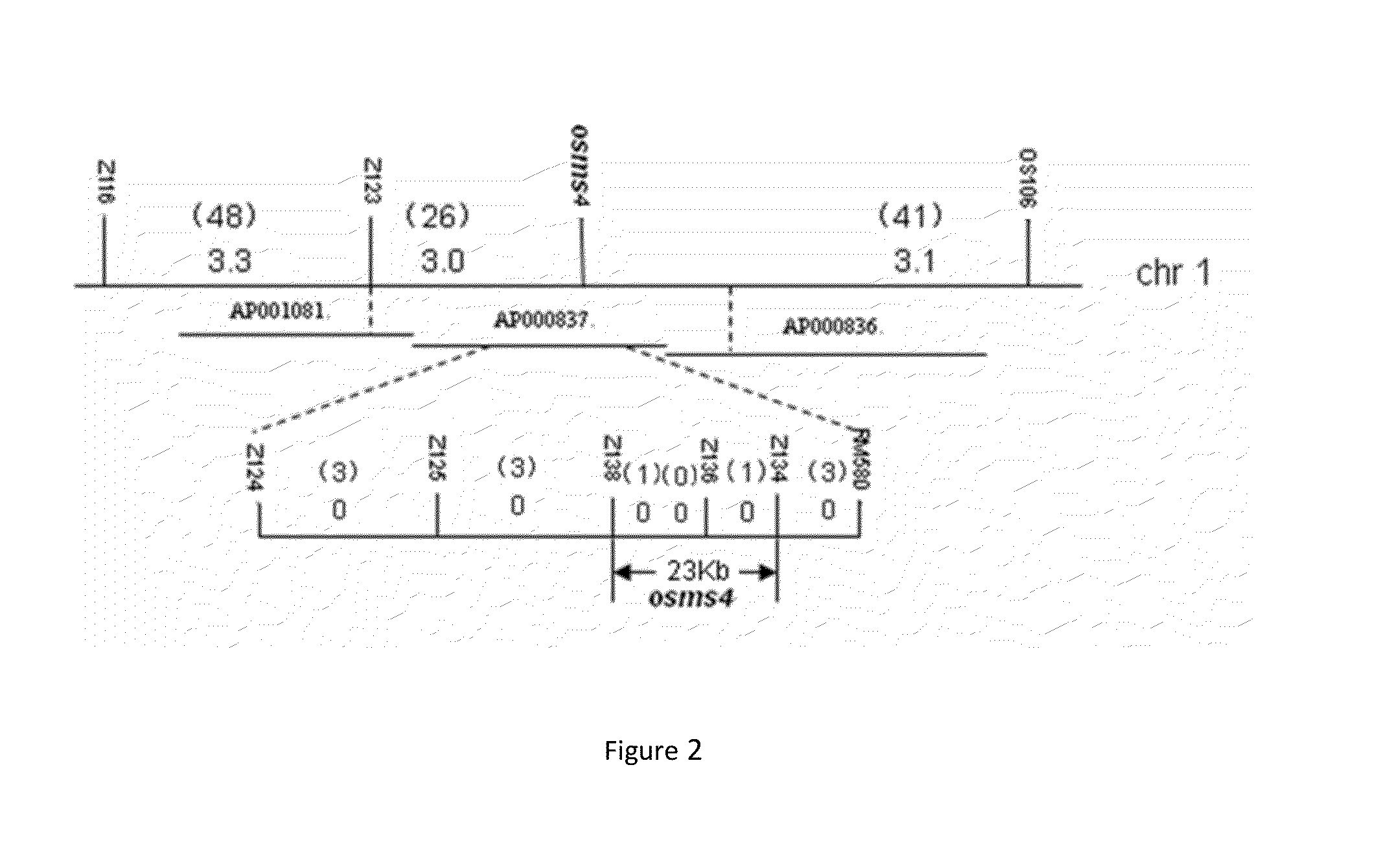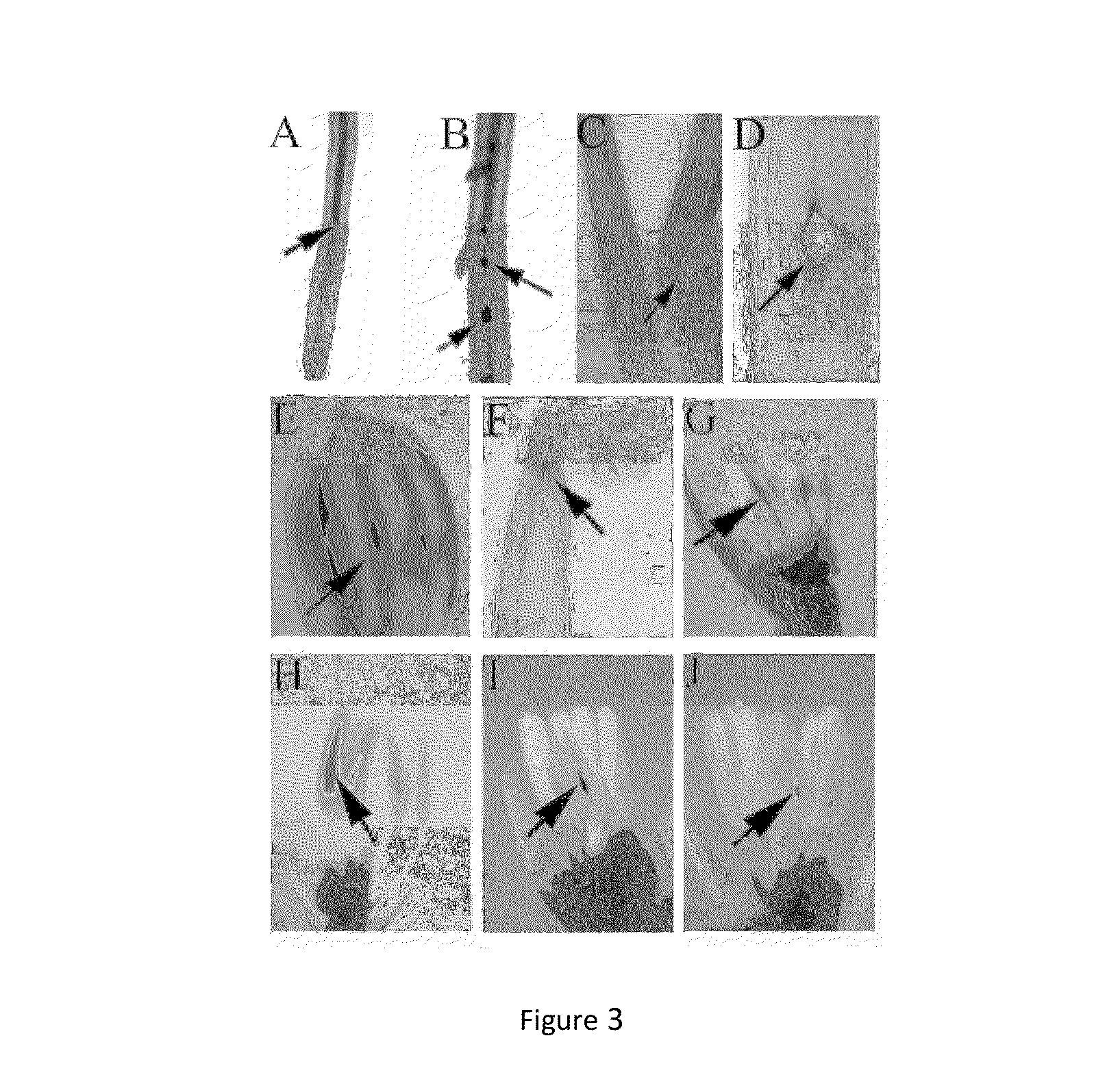Breeding method for two lines hybrid rice based on the rice osms4 gene mutant
a two-line hybrid rice and mutant technology, applied in the field of biotech applications, can solve the problems of inability to self-pollinating and setting seeds, failure of three-line hybrid rice studies to make great breakthroughs, and certain risks in the production of hybrid seeds and reproduction
- Summary
- Abstract
- Description
- Claims
- Application Information
AI Technical Summary
Benefits of technology
Problems solved by technology
Method used
Image
Examples
embodiment 1
[0029]Getting the Improved Mutant (osms4) Plant
[0030]The mutant is produced by mutagenizing the seeds of japonica cultivar 9522 at a dosage of 280Gy with the 60Co gamma ray, backcrossing one male sterile mutant of mutagenized F2 progeny for three generations, obtaining the rice plants having the OsMS4 gene mutant with stable inheritance which are regulated by a recessive single gene. All the plants are planted at the test site of Shanghai Academy of Agricultural Sciences. The OsMS4 gene mutant backcrosses with japonica cultivar 9522, producing the F1 progenies that are all fertile. The separation takes place in the F2 progenies, forming 419 normal plants and 126 mutant plants with the ratio close to 3:1 (χ2=1.028, P>0.05), which demonstrates that the phenotype of the male sterile mutant results from the mutation of a single nuclear gene.
embodiment 2
[0031]Studying the Relationships Between Fertility of the Improved Mutant (the osms4 Mutant) and Thermo-Photoperiod Conditions
[0032]Many years of experiments and studies have found that under the natural conditions the young ear differentiation stage is a period when the metrocytes of pollen take shape. Exposed to a less than 13 hours of daylight per day, the mutant shows stable sterility and has white anthers and typical abortive pollen. Under more than 14 hours of daylight per day at a temperature ranging from 25° C. to 35° C., the mutant can become fertile from sterile, with normal pollen staining, a pollen grain producing rate of 45-80% and a seed setting percentage of 60-80%. The transfer of fertility is sensitive to sunlight duration, sunlight intensity and spectral range. If the sunlight duration falls short of the requirement for fertility transfer, it will be insensitive to the fluctuations in the temperature.
[0033]At the 4th-6th developmental phase of young panicles, the p...
embodiment 3
[0034]Mapping Mutational Locus to Obtain Improved Genes
[0035](1) Mapping population. It refers to the male sterile line chosen from the F2 progeny that is obtained by self-pollination after osms4 crossbreeds with indica type rice Longtefu B.
[0036](2) Rice DNA extraction. The DNA extraction is done by the perfected CTAB method. Specifically, 0.1-0.2 gram of blade (about a half blade) is placed into a mortar and ground immediately with the right amount of liquid nitrogen. The powders are put into a 2 ml centrifuge tube, mixed with 700 μL of 1.5×CTAB solution preheat at 100° C., placed in a 56° C. water bath for 20 minutes and then taken out of the centrifuge tube. The mixture is blended with the equal amount of chloroform / isoamyl alcohol. After centrifugation at 13,000 rpm for 10 minutes, the supernatant fluid is transferred to a new tube and placed for more than half an hour at 20° C. below zero after being blended with 900 μL of absolute ethyl alcohol. The DNA separated out is centr...
PUM
| Property | Measurement | Unit |
|---|---|---|
| Temperature | aaaaa | aaaaa |
| Time | aaaaa | aaaaa |
| Time | aaaaa | aaaaa |
Abstract
Description
Claims
Application Information
 Login to View More
Login to View More - R&D
- Intellectual Property
- Life Sciences
- Materials
- Tech Scout
- Unparalleled Data Quality
- Higher Quality Content
- 60% Fewer Hallucinations
Browse by: Latest US Patents, China's latest patents, Technical Efficacy Thesaurus, Application Domain, Technology Topic, Popular Technical Reports.
© 2025 PatSnap. All rights reserved.Legal|Privacy policy|Modern Slavery Act Transparency Statement|Sitemap|About US| Contact US: help@patsnap.com



